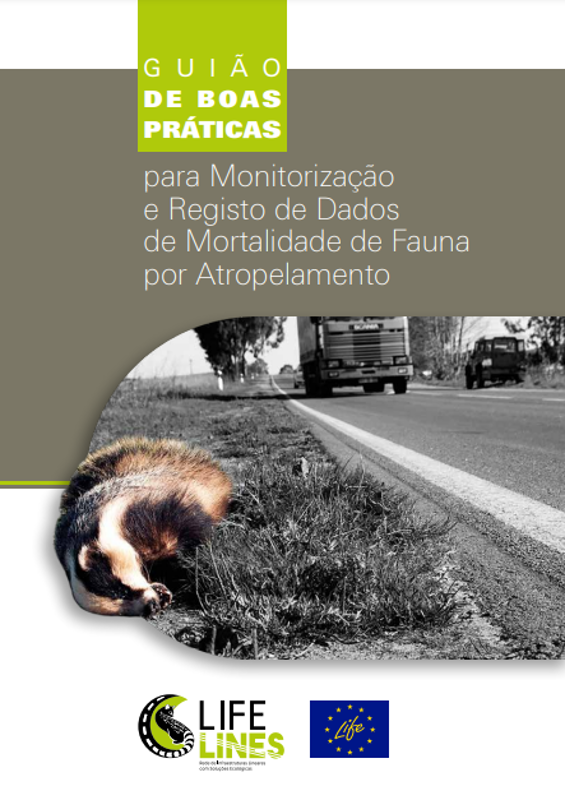Best Practice Guide to Monitor and Record Roadkill Data
Proposal of ecological solutions for the promotion of Biodiversity in road verges
2021-12-20Best Practice Guide to Manage Vegetation and Promote Biodiversity in Linear Infrastructures
2021-12-20LIFE LINES launches Guide that provides the basis for the adoption of Good Practices in the monitoring and recording of roadkilled fauna aimed mainly at actors in the areas of environmental monitoring.
The “Best Practice Guide to Monitor and Record Roadkill Data” of the LIFE LINES Project entitled is now available.
The need for this document frames within the expansion of transportation infrastructures networks in Portugal over the last decades, and, as a consequence, the increase of animal vehicle collisions. Globally, in Portugal, this already the main source of non-natural mortality of fauna. Therefore, it is crucial to obtain standardized information on roadkill, namely the species and their locations, in order to determine the specific causes and to define appropriate mitigating measures, that ultimately benefit road safety.
This best practice guide gathers and presents the procedures for collecting and processing information from roadkill information, based on the experience acquired in the framework of the LIFE LINES (LIFE14 NAT/PT/001081) project and others, such as MOVE, conducted by University of Évora. This guide presents basic or introductory aspects related with the implementation of a roadkill monitoring plan, and is mainly directed to those involved in environmental monitoring, municipalities or local governance, and even concerned citizens. By offering the essential bases to adopt best practices for monitoring and recording roadkill, this guide is expected to help developed actions to mitigate animal mortality and to increase road safety at local and national scales.
Download here the Best Practice Guide to Monitor and Record Roadkill Data.

